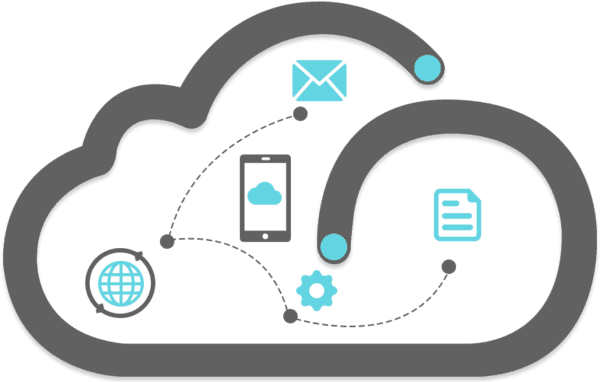
Disaster Recovery Part 2: Common Failures & Predictable Recovery
August 24, 2017Millennial Executive: How to Be a Good Buyer
September 6, 2017The cloud has created quite a buzz in the technology world and many organizations are moving towards the ‘modern way of using technology’ to reduce costs, increase application delivery speed, and flexibility.
However, a business can face severe hazards if cloud implementation is not done properly. But of course, the growing pressure is forcing many companies to make a fast decision and jump on the cloud bandwagon without considering the results.

Migrating apps to the cloud can’t possibly be done with a flip of a switch. Organizations that plan on making the move should first analyze each and every perspective, choose the right tools, and in some cases, even restructure their apps to make the most of cloud technology.
If you are also in the midst of implementation decisions, then do make sure to take into account the following considerations before you make the BIG move.
What Available Resources Do You Need to Adopt Cloud Computing?
Do you have an expertise in the IT field? Is your IT team tech savvy? Do they have the skills to monitor and optimize the potential change? Will they be able to put in extra time for the work? Understanding the capability of you and your team is vital before making any move.
A survey conducted by Right Scale found that 32 percent of companies consider lack of resources and expertise their biggest challenge when implementing cloud computing.

Most people don’t take the time out to learn the functioning of the app and the way to scale it. However, having sufficient knowledge about the subject is like winning half the battle and once you learn the ropes, you will be more confident in your ability to protect your cloud environment to match the performance metrics your business requires.
The best way to combat the issue is to plan for any potential security breech beforehand. Make sure you understand the security and governance requirements and perform a vulnerability test to eliminate the probability of any flaw in your system.
Are There Any Cloud Computing Security and Infrastructure Concerns?
Contrary to popular belief that you only need a good internet connection when moving to the cloud, it is essential to have a solid infrastructure – one that supports the cloud computing model and ensures that your app runs smoothly.
Cloud infrastructure refers to both components – the hardware and software such as servers, network, bandwidth, virtualization, management tools and security. Choosing the wrong infrastructure can affect your entire system and cost you much more than your planned budget.

According to a survey by THINK strategies, 49 percent of participants claimed to be 10 percent over their budgets at the time of launching a cloud-based app; while 33 percent were ready with a solid architecture and didn’t have to make any changes to their systems.
To avoid this mistake that is made by the majority, make sure to keep in mind the changes or the potential growth when initially designing the app. Without adapting your plan for growth, you may end up with a design that may not be able to meet your requirements in the future.
What Is the Correct Model of Cloud Computing?
The two basic models for cloud include the public and the private models. The public model shares resources across many organizations which of course, cuts back the expense. On the other hand, the private model is more secure and the infrastructure resources are limited to a single organization.
There is also a choice of going for the:
- Hybrid model which combines both – the private and the public platform
- On-premises that enables the cloud infrastructure to run in the company’s data center
- Co-location where the resources are owned by the company but the infrastructure will exist in a 3rd party location where power, security, and HVAC will be shared amongst other essential components
- Hosted server that allows companies to lease out resources owned by a third party
However, before you choose the model for your cloud based app, make sure to carefully analyze the requirements of your business along with the expertise you and your team possess to make the right decision.
Disaster Recovery
Just because you have decided to make the move and implement cloud technology doesn’t mean you can relieve yourself from the responsibility of backing up data. Would relying solely on your cloud service provider to take care of your data be sufficient in times of crisis? And if it is adequate, then what plans does the cloud service provider have to get your company out of the disaster and minimize downtime?
Believe it or not, but 50 percent of companies have faced some kind of disaster which was bad enough to halt operation. It has also been estimated that 81 percent of outages lasted more than a day, while the majority of companies were out of business within three years of the outage.
To ensure your company’s survival, you and the employees must have access to all the companies’ data and of course, knowledge of what constitutes an outage and what to do in times of crisis.
Scalability
A cloud app is scalable and this is one of the most attractive prospects of implementing the technology. But there is a limit to everything and even cloud can have constraints. Before moving the app, make sure you have analyzed every prospect of cloud computing to ensure that your cloud infrastructure will grow with the growth of your app.
What to Do Next?
These were just some of the important considerations to make when implementing cloud based application. As you move along and adapt to the cloud technology, these steps will help you make the right choices and lead you in the right direction.


1 Comment
If I had some systems in the cloud, I would for sure want to make sure that they scale well. As you said, there are limits but that doesn’t mean that you can’t upgrade the infrastructure with your growth. I’d just be sure to do a bunch of research before going out and hiring someone.